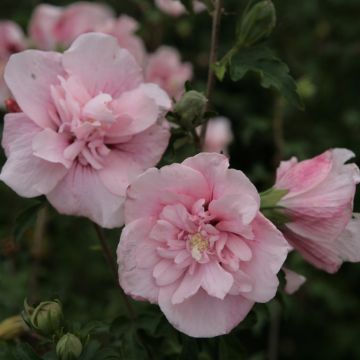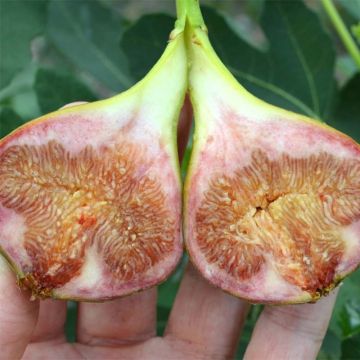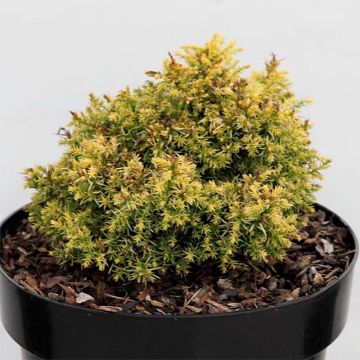

Nothofagus antarctica


Nothofagus antarctica


Nothofagus antarctica
Nothofagus antarctica
Nothofagus antarctica
Southern Beech, Magellan Beech
After the loss of the previous Australian beech, this one is very small and has very few leaves. Very disappointed!
Guyrek, 22/10/2025
Special offer!
Receive a €20 voucher for any order over €90 (excluding delivery costs, credit notes, and plastic-free options)!
1- Add your favorite plants to your cart.
2- Once you have reached €90, confirm your order (you can even choose the delivery date!).
3- As soon as your order is shipped, you will receive an email containing your voucher code, valid for 3 months (90 days).
Your voucher is unique and can only be used once, for any order with a minimum value of €20, excluding delivery costs.
Can be combined with other current offers, non-divisible and non-refundable.
Home or relay delivery (depending on size and destination)
Schedule delivery date,
and select date in basket
This plant carries a 24 months recovery warranty
More information
We guarantee the quality of our plants for a full growing cycle, and will replace at our expense any plant that fails to recover under normal climatic and planting conditions.

Would this plant suit my garden?
Set up your Plantfit profile →
Description
Nothofagus antarctica, also known as the southern beech or Magellan beech, is a deciduous tree, native to the humid temperate forests of Chile and Argentina. With its original irregular but full of lightness habit, it adds a shiny green foliage that turns golden in autumn, before revealing in winter its brown and red often twisted and punctate branches.
Nothofagus antarctica has a conical, spread out, variable but always light habit and is surprising with its sometimes multiple trunks and its twisted branches. Its dark green leaves, very small compared to the size of the tree, measure only 2.5cm (1 in) long. They have undulate and dentate edges and take on a magnificent golden hue in September - October. The bark of the branches, reddish-brown, is punctuated by small light spots. When the buds start to open, the southern beech fills the air around it with a fragrance that can evoke cinnamon.
The southern beech belongs to the recently discovered family of Nothofagaceae, close to the Fagaceae and Betulaceae. It is native to the Andean forests of Patagonia, southern Chile and Argentina from latitude 36° (96.8 °F) S to Tierra del Fuego, and is still not widely cultivated in our latitudes. The southern beech can reach 35m (114ft 10in) in height in its country of origin, but it rarely exceeds 15m (49ft 2in) in height in our climate, with a fairly rapid growth.
Plant Nothofagus antarctica in neutral to acidic, fertile, humus-rich, moist, well-drained soil, preferably in full sun. This large bush can be susceptible to root rot in heavy soil. Stake it at planting and make sure to place the southern beech sheltered from strong or drying winds. Pruning may be necessary before the resumption of growth, by removing diseased or dead wood and crossed branches.
Nothofagus antarctica will be cultivated as an ornamental tree in parks and large gardens, where it will express all its uniqueness as a specimen. It shows more harmonious development when grown in sheltered conditions from the wind, and it enjoys humid atmospheres. A beautiful backdrop can be created by associating it with the black gum and the iron tree, which accept similar growing conditions and offer the same autumnal interest. Fans of bonsai often adopt this small tree with its surprising habit.
Report an error about the product description
Nothofagus antarctica in pictures




Plant habit
Flowering
Foliage
Botanical data
Nothofagus
antarctica
Nothofagacaeae
Southern Beech, Magellan Beech
Cultivar or hybrid
Other Shrubs A to Z
View all →Planting and care
Plant Nothofagus antartica in neutral to acid, fertile, humus-bearing, moist, well-drained soil, preferably in full sun. This large bush may be susceptible to root rot in heavy soil. Stake at planting and ensure to shelter the Southern Beech from strong or drying winds. Pruning may be necessary before the start of the growing season, by removing diseased or dead wood and crossed branches.
Planting period
Intended location
Care
Planting & care advice
-
, onOrder confirmed
Reply from on Promesse de fleurs
Similar products
Haven't found what you were looking for?
Hardiness is the lowest winter temperature a plant can endure without suffering serious damage or even dying. However, hardiness is affected by location (a sheltered area, such as a patio), protection (winter cover) and soil type (hardiness is improved by well-drained soil).

Photo Sharing Terms & Conditions
In order to encourage gardeners to interact and share their experiences, Promesse de fleurs offers various media enabling content to be uploaded onto its Site - in particular via the ‘Photo sharing’ module.
The User agrees to refrain from:
- Posting any content that is illegal, prejudicial, insulting, racist, inciteful to hatred, revisionist, contrary to public decency, that infringes on privacy or on the privacy rights of third parties, in particular the publicity rights of persons and goods, intellectual property rights, or the right to privacy.
- Submitting content on behalf of a third party;
- Impersonate the identity of a third party and/or publish any personal information about a third party;
In general, the User undertakes to refrain from any unethical behaviour.
All Content (in particular text, comments, files, images, photos, videos, creative works, etc.), which may be subject to property or intellectual property rights, image or other private rights, shall remain the property of the User, subject to the limited rights granted by the terms of the licence granted by Promesse de fleurs as stated below. Users are at liberty to publish or not to publish such Content on the Site, notably via the ‘Photo Sharing’ facility, and accept that this Content shall be made public and freely accessible, notably on the Internet.
Users further acknowledge, undertake to have ,and guarantee that they hold all necessary rights and permissions to publish such material on the Site, in particular with regard to the legislation in force pertaining to any privacy, property, intellectual property, image, or contractual rights, or rights of any other nature. By publishing such Content on the Site, Users acknowledge accepting full liability as publishers of the Content within the meaning of the law, and grant Promesse de fleurs, free of charge, an inclusive, worldwide licence for the said Content for the entire duration of its publication, including all reproduction, representation, up/downloading, displaying, performing, transmission, and storage rights.
Users also grant permission for their name to be linked to the Content and accept that this link may not always be made available.
By engaging in posting material, Users consent to their Content becoming automatically accessible on the Internet, in particular on other sites and/or blogs and/or web pages of the Promesse de fleurs site, including in particular social pages and the Promesse de fleurs catalogue.
Users may secure the removal of entrusted content free of charge by issuing a simple request via our contact form.
The flowering period indicated on our website applies to countries and regions located in USDA zone 8 (France, the United Kingdom, Ireland, the Netherlands, etc.)
It will vary according to where you live:
- In zones 9 to 10 (Italy, Spain, Greece, etc.), flowering will occur about 2 to 4 weeks earlier.
- In zones 6 to 7 (Germany, Poland, Slovenia, and lower mountainous regions), flowering will be delayed by 2 to 3 weeks.
- In zone 5 (Central Europe, Scandinavia), blooming will be delayed by 3 to 5 weeks.
In temperate climates, pruning of spring-flowering shrubs (forsythia, spireas, etc.) should be done just after flowering.
Pruning of summer-flowering shrubs (Indian Lilac, Perovskia, etc.) can be done in winter or spring.
In cold regions as well as with frost-sensitive plants, avoid pruning too early when severe frosts may still occur.
The planting period indicated on our website applies to countries and regions located in USDA zone 8 (France, United Kingdom, Ireland, Netherlands).
It will vary according to where you live:
- In Mediterranean zones (Marseille, Madrid, Milan, etc.), autumn and winter are the best planting periods.
- In continental zones (Strasbourg, Munich, Vienna, etc.), delay planting by 2 to 3 weeks in spring and bring it forward by 2 to 4 weeks in autumn.
- In mountainous regions (the Alps, Pyrenees, Carpathians, etc.), it is best to plant in late spring (May-June) or late summer (August-September).
The harvesting period indicated on our website applies to countries and regions in USDA zone 8 (France, England, Ireland, the Netherlands).
In colder areas (Scandinavia, Poland, Austria...) fruit and vegetable harvests are likely to be delayed by 3-4 weeks.
In warmer areas (Italy, Spain, Greece, etc.), harvesting will probably take place earlier, depending on weather conditions.
The sowing periods indicated on our website apply to countries and regions within USDA Zone 8 (France, UK, Ireland, Netherlands).
In colder areas (Scandinavia, Poland, Austria...), delay any outdoor sowing by 3-4 weeks, or sow under glass.
In warmer climes (Italy, Spain, Greece, etc.), bring outdoor sowing forward by a few weeks.


























































